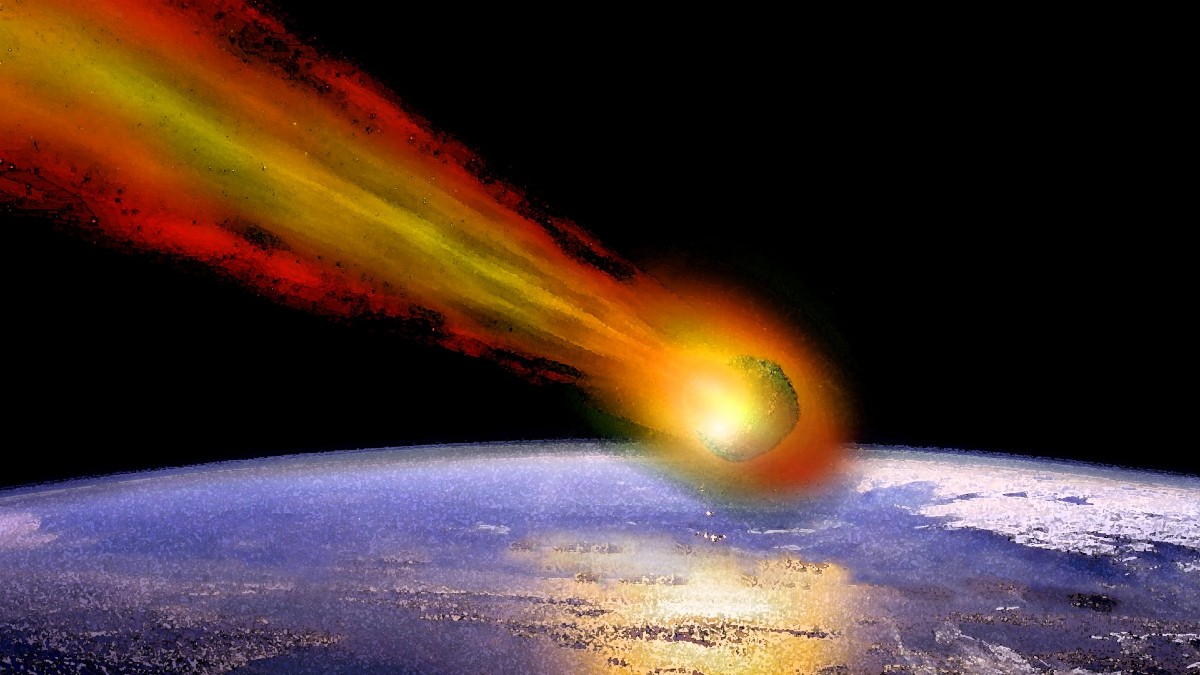A Massive Asteroid Entered Earth’s Atmosphere, See The Shocking Footage
An asteroid struck the atmosphere and burned over the city of Krasnoyarsk in Russia, and CCTVs and dashcam footage caught it on camera.
This article is more than 2 years old

The people of the Siberian city of Krasnoyarsk got quite the light show on Wednesday evening when an asteroid hit the atmosphere over the city at approximately 8 p.m. local time. The phenomenon was recorded on dashcams and CCTV cameras across the city. The footage found its way to social media, where it was shown on the Latest in Space Twitter account.
The amazing video footage shows the asteroid as a very bright light streaking across the sky before splitting into two pieces in a fiery explosion. It looks like a rocket making its descent into the city, or a salvo fired from a spaceship out of a science fiction movie. The video captures different angles around the city, giving us many views of the asteroid’s descent.
The brightness of the asteroid as it streaks through the sky and subsequently explodes is an indicator of how large it was and how much material had to pass through the atmosphere. Once it passes through enough layers to fall to Earth, an asteroid then becomes a meteorite, the difference being the planetary contact. Most meteorites that hit the Earth’s atmosphere are vaporized before they hit the ground, as seems to have happened in the video of the one over Krasnoyarsk.
Sometimes asteroids that hit the Earth do land on the ground. In 2013, a similar explosion took place over Chelyabinsk, far to the west of Krasnoyarsk and near the Ural Mountains. After the sighting of the meteor, a large hole, 20 feet in diameter, was found in the frozen ice in nearby Lake Chebarkul, hinting at the damage the asteroid could have done to the city itself.
The Chelyabinsk asteroid impact also hinted at the consequences of such an event. Fortunately, there were no injuries reported in relation to Wednesday’s meteor over the skies in Krasnoyarsk, but in 2013, thousands of injuries resulted from the shock wave of the Chelyabinsk meteor strike, mostly caused by glass breaking all over the city. Chelyabinsk has a population of 1.2 million people, only slightly larger than the 1.06 million people residing in the Siberian city.

Russians are no strangers to asteroids passing through the atmosphere to either burn into ash or continue on to make an impact on the ground. One of the most famous asteroid impacts witnessed by modern humans took place in Siberia in 1908, flattening forests and killing reindeer on its way down. There are no major cities in the Tunguska area, which is fortunate given the carnage it caused, and the fright it could have inspired in people who weren’t used to planes, satellites, and other lights in the sky that we take for granted over a century later.
It is fortunate for the people of Krasnoyarsk that the asteroid that grazed the atmosphere above them didn’t land like the ones in Chelyabinsk or Tunguska, but the rocks from space are a serious enough concern that NASA has had to figure out ways to deflect them from hitting the planet. A large asteroid could cause catastrophic damage or even an extinction event, such as what is suspected to have killed the dinosaurs. As long as they are not making impact, however, they put on quite a show.











